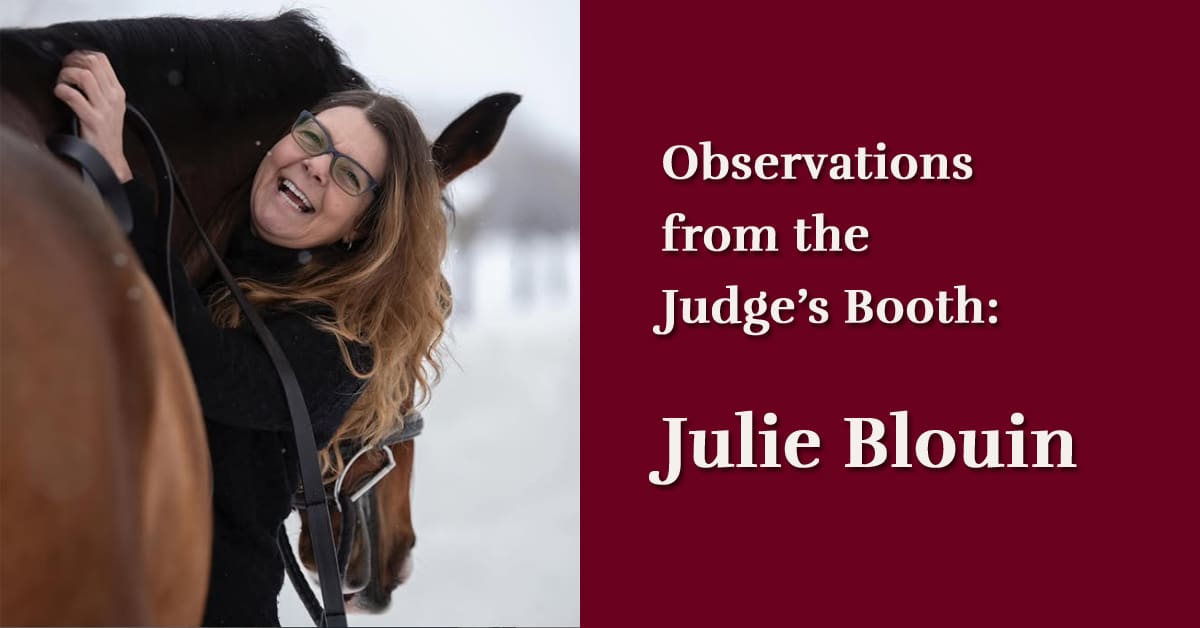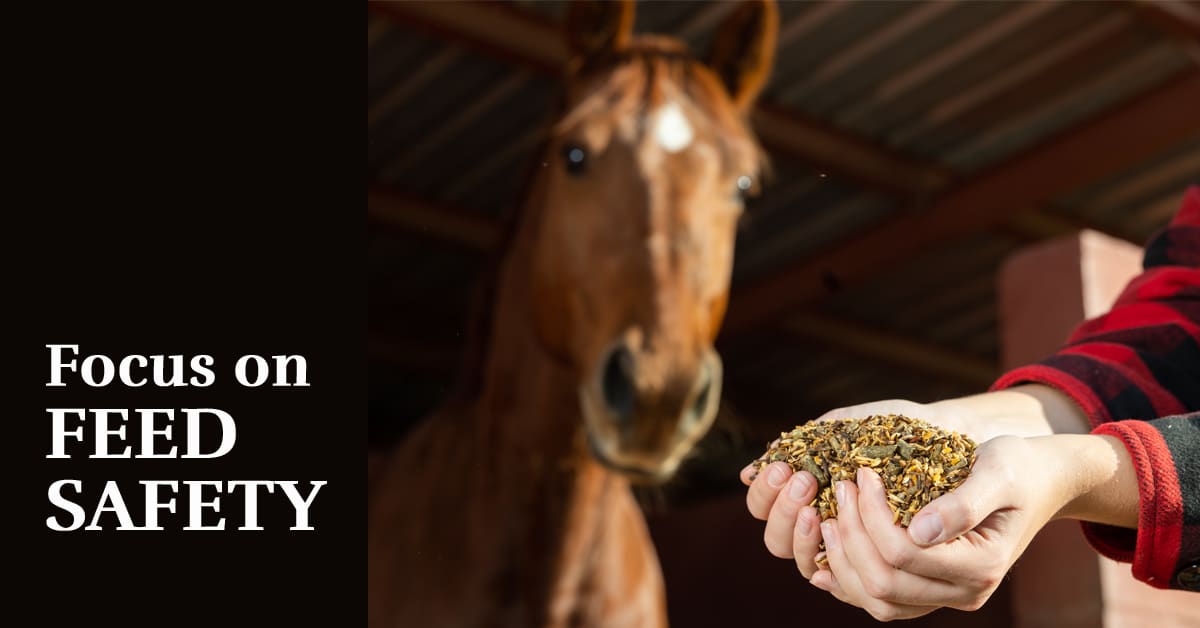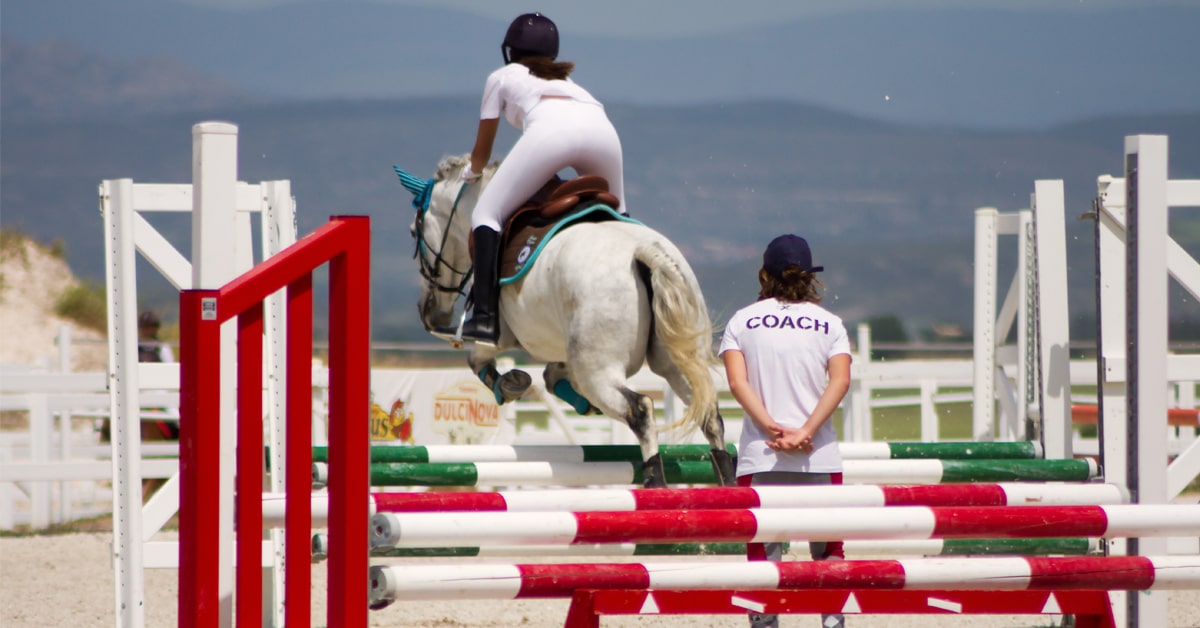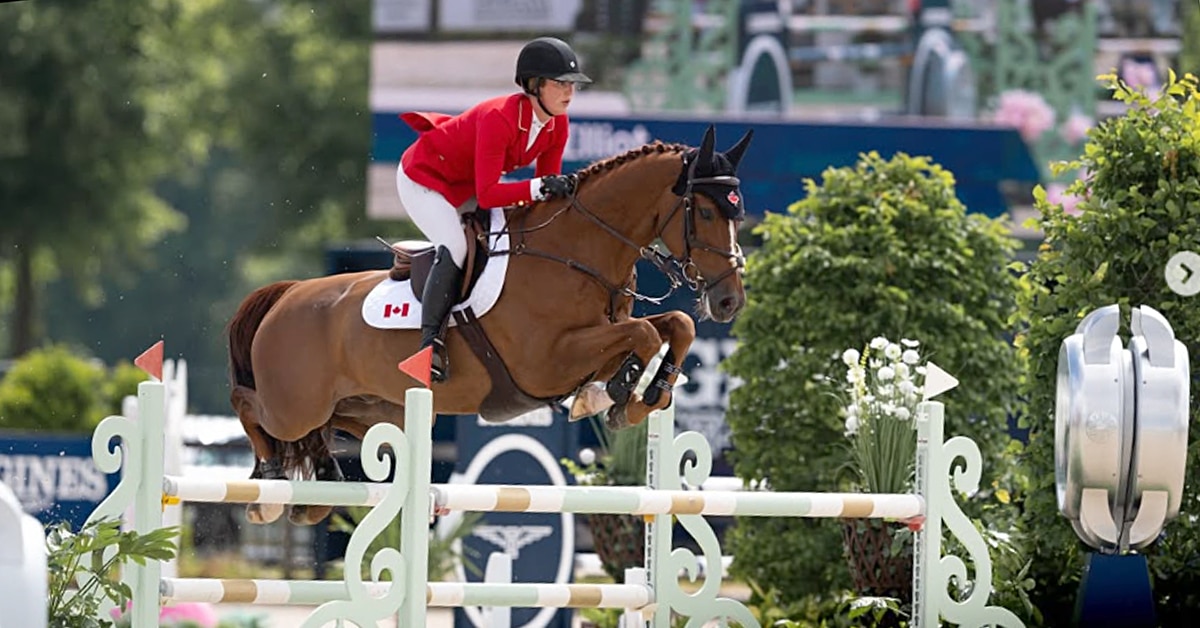With the call to line up, follow directions precisely. If you are asked to line up from a canter or trot, which happens often in equitation classes, you should proceed directly to the lineup from that gait. If you are lining up from a gait other than the walk, you should be extra cautious when navigating the other competitors in the ring.
Many people feel the need to make an extra pass in front of the judge on their way to line up. I don’t believe there is any benefit to this, as the judge has likely already decided on the placings, or will be looking down, reviewing numbers. It will serve to accomplish little other than irritating the judge or your competitors.
If you have a horse that’s not comfortable in the lineup or is simply green, there are ways to deal with the tenseness or nervous energy without disrupting the rest of the lineup. I will line up at the far end of the ring, away from the in-gate. This ensures that I am not a disruption to the ribbon presentation, it allows me to make circles without interrupting the lineup, and my horse will not get more agitated seeing horses leave the ring. I try to make sure I’m the last one to line up as well, asking the horse for the least possible amount of patience.
Never try to squeeze a green horse into the lineup or try to train them to stand. You won’t be penalized if you make a safe and respectful decision that is in the best interest of the horse and the rest of the class. I’ve had many horses that just don’t like standing; I will calmly see if they’ll line up, but if not I just make circles. Always give yourself enough room in between horses. I am always surprised when people squish together when there is a whole ring available.
If a horse stands in the lineup on a nice loose rein, that indicates a nice disposition and gives a pleasant impression to the judge. I’m guilty of chatting with competitors in the lineup, but as a judge, I’m not going to hold it against you if it’s respectfully quiet chit-chat. I always reward my horse for a job well done with a couple of pats, especially when it stands and drops its head. A pat will not be penalized, and it will most often relax the horse. If you’re standing in the lineup, tense and with a tight rein, your horse is going to fidget and pick up on that nervous energy.
In an equitation class, the rider needs to be a bit more aware of their position even in the line, and there is more of a need to reflect composure. If you’re slouching or your horse is crooked, that shows bad form. Especially in the equitation classes, show polish and make sure you’re sitting in a proper position with heels down, fingers around the reins and a tall upper body. You should always be prepared for anything in the equitation – in a ride-off situation you are often asked to canter or trot directly to the first fence, in which case you need to have your horse alert to the aids and ready to respond to your leg.
Perhaps most importantly, always show respect for the horse. No matter how the class has gone, never take your temper out on the horse by ‘see-sawing’ or trying to “train” in the line up. It reflects poorly on you, and as a result you may be bumped down the order. You are being judged from the moment you walk in to the moment you leave the ring, so always be courteous and respectful to your competitors, the judge, and your horse. I don’t believe that a class can be won in the lineup, but by doing something disrespectful, it can definitely be lost.
The Latest









